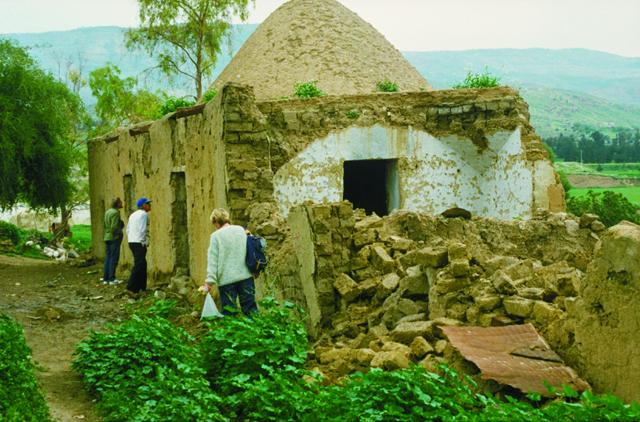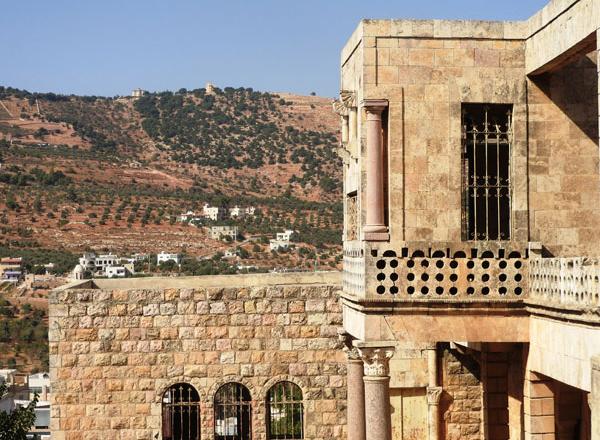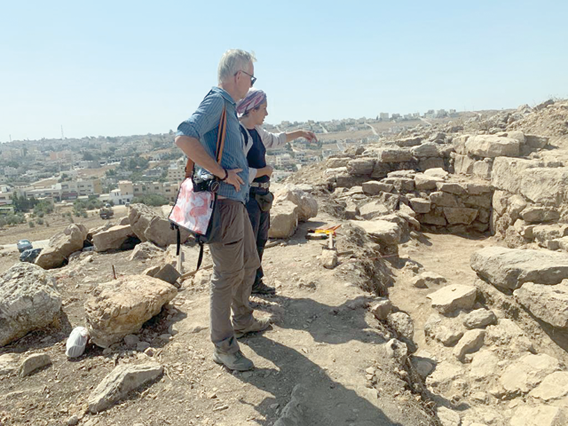You are here
Jordan could take cue from Germany’s Potsdam in heritage preservation, says scholar
By Saeb Rawashdeh - Oct 09,2021 - Last updated at Oct 09,2021

A domed house in the Jordan Valley is seen in this photo from 1984 (Photo courtesy of Reinder Neef)
AMMAN — Potsdam, considered Germany’s largest World Heritage Site, can be used as model for preserving Jordanian heritage sites, according to a Jordanian scholar.
Located 25km southwest of the capital Berlin, Potsdam was once the residence of Prussian kings and the German Kaiser until the end of WW1 in 1918.
“Historically speaking, Potsdam served during the past centuries as a centre of European immigrants mainly from the Netherlands, Russia, France and Bohemia because of labour and religious tolerance,” said former president of Yarmouk University Zeidan Kafafi in a recent interview with The Jordan Times.
“These international influences are still reflected in the city plan and architecture, like the Dutch Quarter and the Russian Colony Alexandrovka,” noted Kafafi.
The most attracting cultural aspect of Potsdam is Sanssouci Park, located at the western part of the city centre, he said.
“The summer palace of Sanssouci was built in 1745 as a residence for King Frederick the Great where he could live without disturbance. Later on, other palaces were built in the Sanssouci Park, like the New Palace, but also the Roman Baths and the Chinese Tea House,” Kafafi said
He added that another site of importance is the Russian colony of Alexandrovka.
The colony was erected in 1826 by King Frederick William III in the memory of his close friend Czar Alexander I, his ally against Napoleon, he said.
The half-timber houses of the colony were built with half trunks as façades in a Russian style, and the houses were provided with gardens to create a green space, which might enable inhabitants to socialise.
Regarding Jordanian cultural heritage, Kafafi highlighted Jordan’s vernacular buildings, constructed in a traditional style, which are over 50 to 100 years old and were built across the Kingdom.
The buildings’ architecture reflects materials and styles traditional to Jordan, which highlights the importance of their preservation.
“I would recommend that those buildings are put under governmental law and protection,” Kafafi said.
A list of those building in each Jordanian city should be prepared by a governmental institution, the scholar said.
“A committee constituted of architects and archaeologists should be established to decide on which buildings should go under this law,” he said.
Kafafi outlined a list of traditional sites that could go under the proposed governmental list, including Beit King Talal in Jabal Amman, several houses in Jabal Luweibdeh, Al Hussein College School in Jabal Al Hussein, King Abdullah Masjid in Mahatta, Madafet Al et Tell in Irbid, Dow House in Amman, House of Hassan Al Kayed in Souf, Abu Jaber Castle in Salt, among others.
“Unfortunately, the vernacular buildings are concentrated in the downtown of Jordanian cities and many such buildings are subjugated to destruction due to poor urban planning and over-commercialisation. The regulations should protect such quarters as a national cultural heritage,” Kafafi said.
Related Articles
AMMAN — Community archaeology, which seeks to empower and involve local communities in the protection and preservation of their shared past,
AMMAN — Built during the 1920s, Qaser Al Pasha is a unique monument in Jordan as the era was characterised with a scarcity of sophisticated
AMMAN — Since its establishment of a branch of the German Protestant Institute of Archaeology [GPIA] in Amman in 1975, the GPIA has de


















